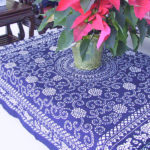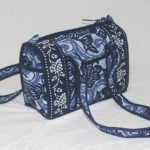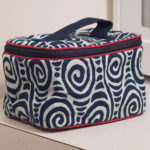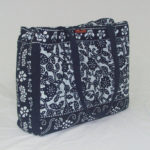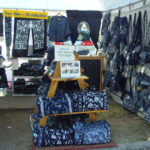Shengzhu Bernardin
True Blue Collections, Inc.
Torrington, CT
Website
Uses natural indigo plants to dye fabric with 100% cotton, and soy paste resist to create patterns. Shengzhu started her indigo dye journey since she was a child, and has over 30 years experience in natural plants dyeing, invented two-tone blue method in indigo dyeing field, and her student Chris Lowry started to work with her 3 years ago, adding a lot of passion. Based on natural dyeing, we developed many new designs and new technology with other natural plants. All our work are hand-dyed and handmade in Connecticut. She started to introduce her work to the public since 2001 and enjoys working with the dye and designing beautiful new England fabric patterns. Based on the centuries-old natural dyeing process, have developed many new designs and created and refined the new “two-tone technique“.
We use natural indigo plants dyed 100% cotton with soy paste to create the pattern.
- Design & Pattern Board Making
A design is drawn on paper and carved to serve as the dye-blocking template. Varnish is applied to resist the dye-blocking paste.
2. Dye-Blocking
Powdered soybean, lime, and water are mixed to create a dye-blocking paste, then spread over the template, depositing itself in the pattern of the template on the cotton cloth, then allowed to dry for seven days.
3. Natural Blue Grass Dyeing
The juice extracted from “Blue Grass” (an indigo plant) is combined with a wine and several other ingredients to create the natural indigo dye. The cloth is dyed at room temperature for variable times, depending on the weather conditions, for a rich blue.
4. Scraping & Washing
The dye-blocking soy paste is now scraped from the dyed fabric and washed several times to remove the powder that remains as well as any extra dye.
5. Sewing
We use our fabric to create handbags, tablecloths, curtains and more.

